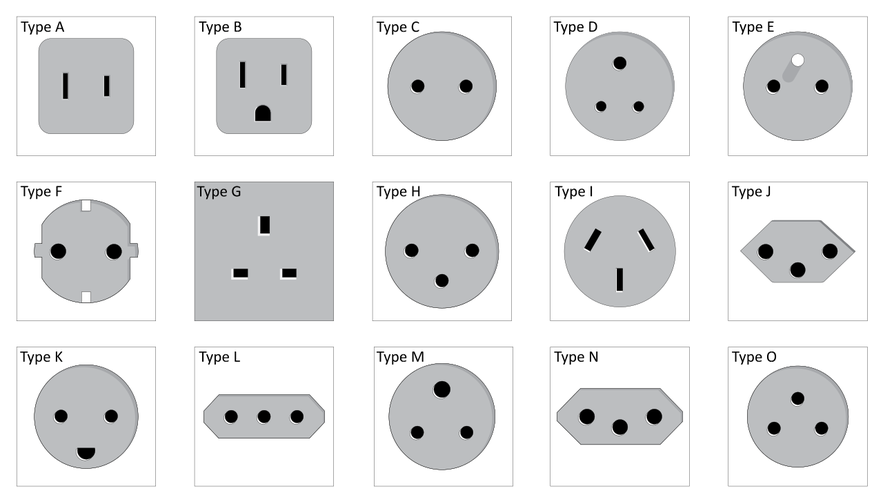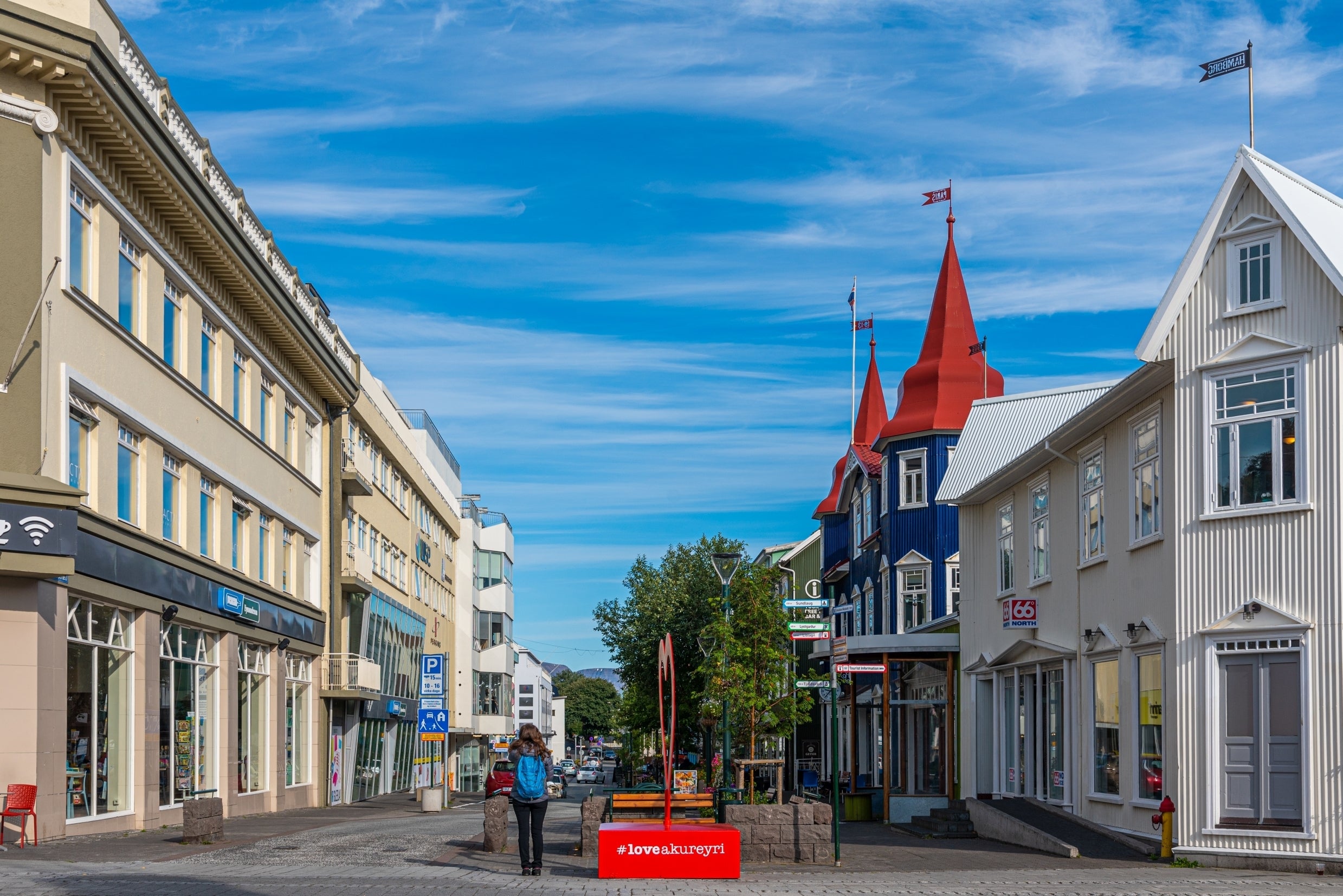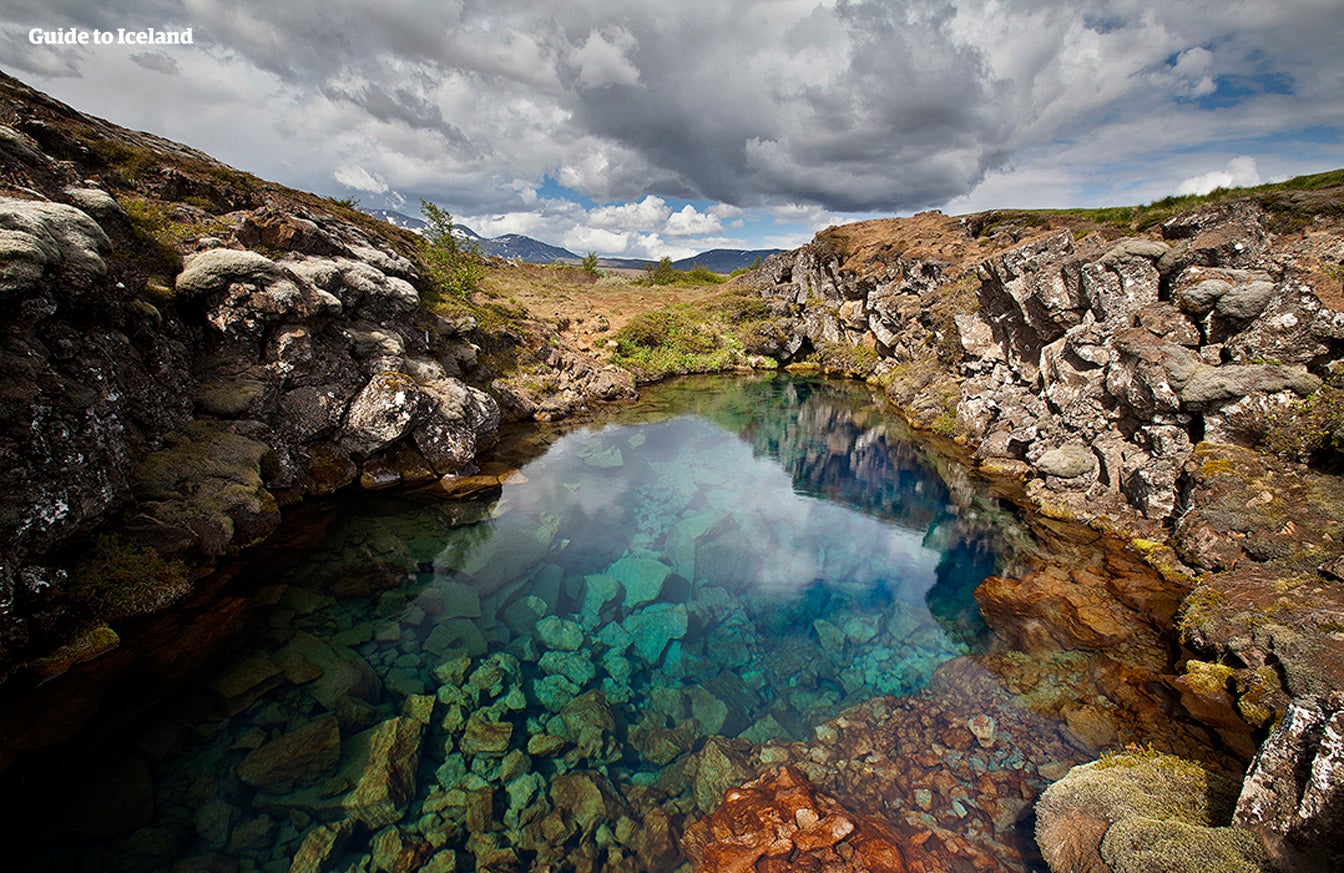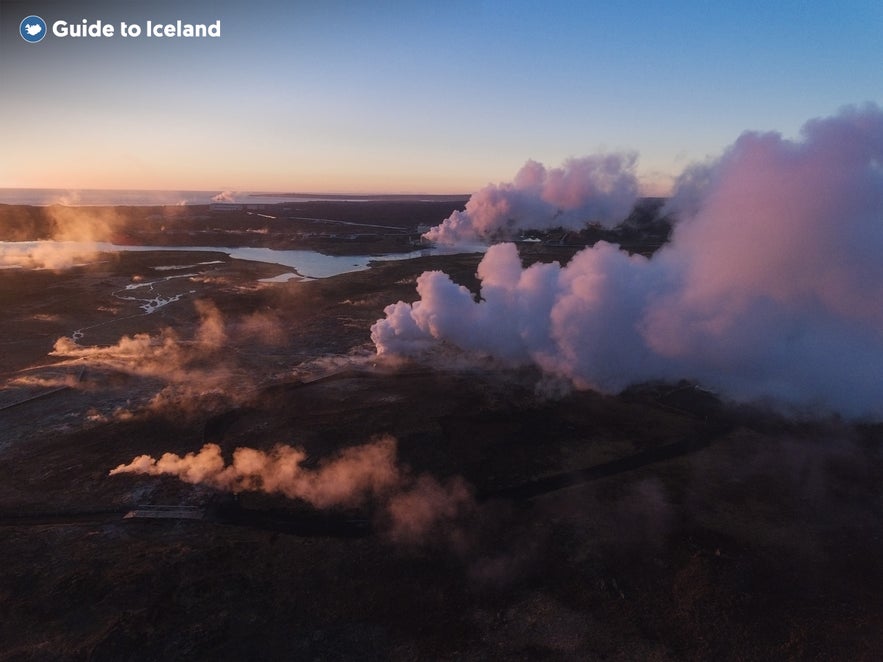
Iceland is famous for its green, eco-friendly energy production that keeps the country running. The energy harnessed from the Earth's heat and the powerful Icelandic rivers ensures you can stay connected with friends and family, take amazing photographs, access information, and share your trip.
You can even opt for a hybrid or electric option when renting a car, so you can experience eco-friendly and affordable self-drive tours of Iceland.
However, before setting off, important to ensure your electronics have the right plugs for Icelandic power outlets. It's a simple thing to overlook, but electrical plugs, converters, and adapters are some of those necessary details to consider when planning a trip abroad, and Iceland is no exception.
Why You Can Trust Our Content
Guide to Iceland is the most trusted travel platform in Iceland, helping millions of visitors each year. All our content is written and reviewed by local experts who are deeply familiar with Iceland. You can count on us for accurate, up-to-date, and trustworthy travel advice.
After a long flight to Keflavik International Airport, the last thing you want is to arrive at your accommodation in Iceland only to discover you lack the proper plug to charge your electronics, or worse, they're incompatible with the country's voltage!
Read on to learn about Iceland's electrical specifications and prepare your trip in confidence. Keep your devices charged and ready for the journey ahead.
- Prepare for your trip: What To Pack for Iceland for All Seasons
- See also: Iceland's Weather, Climate, and Temperature Year-Round
Practical Information About Electricity in Iceland
Photo from Wikimedia, Creative Commons, by ARTol. Iceland uses Type C and Type F plugs.
It's important to know what kind of plugs and electrical outlets are used in Iceland and if you need a converter or an adapter to use during your visit. Read on to fully prepare for your trip.
Electrical Plugs and Outlets In Iceland
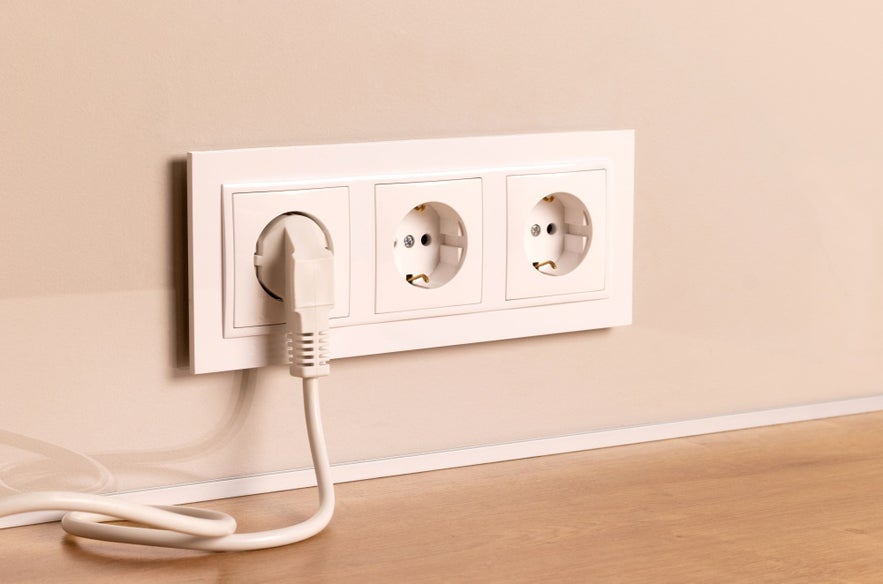
In Iceland, electrical plugs and outlets adhere to the European standard, characterized by the Type C and Type F sockets. Type C sockets feature two round pins and are commonly used for devices with lower power consumption, while Type F sockets incorporate two round pins with two grounding clips on the sides.
Travelers from countries using different plug types, such as Type A or Type B, commonly found in countries like the United States and Canada, or Type G in the United Kingdom, will require an adapter or a converter to connect their devices to Icelandic electrical outlets.
These adapters can typically be purchased at Keflavik Airport and electronics stores, or you may even be able to borrow one from your hotel in Iceland!
Voltage in Iceland

Photo from Wikimedia, Creative Commons, by Santeri Viinamäki.
Voltage in Iceland is standardized at 230 volts, with a frequency of 50 Hertz. This voltage is compatible with most European appliances and electronics. However, travelers visiting from countries with different voltage standards will require a voltage adapter to safely use their devices.
For travelers from countries using 110-120 volts, such as the United States, Canada, and some parts of Central and South America, a voltage adapter is necessary to convert the higher Icelandic voltage to one compatible with their devices. Additionally, travelers should ensure that their electronic devices are also compatible with the 50 Hertz frequency used in Iceland.
It's essential for travelers to check the voltage requirements of their electronic devices before traveling to Iceland to avoid damage or malfunction. Attempting to plug a device that requires a different voltage can lead to overheating and even burnout!
Adhering to these voltage standards ensures a smooth and safe experience when using electrical devices during your visit to Iceland.
Do I Need a Converter or Adapter in Iceland?
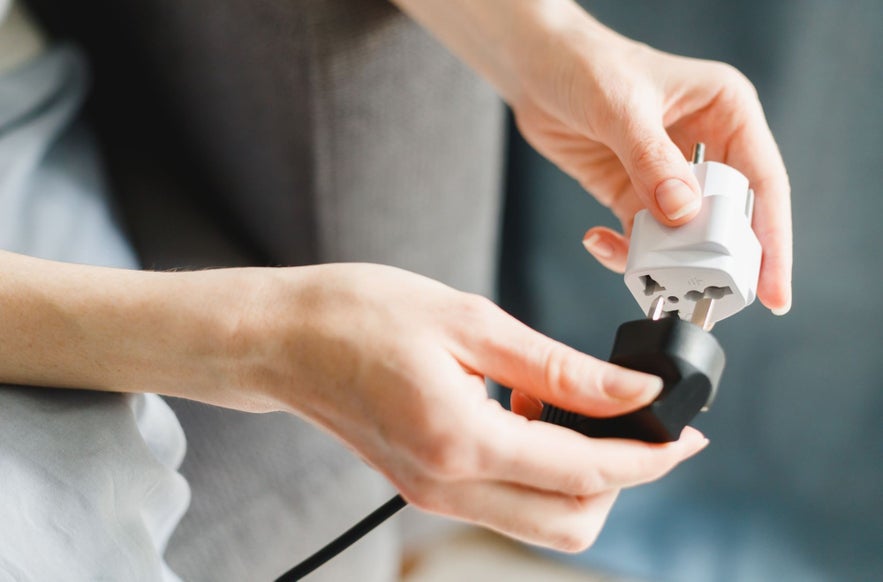 It's important to know whether you need a converter or adapter for your trip to Iceland, as they serve different purposes. But what actually makes them different?
It's important to know whether you need a converter or adapter for your trip to Iceland, as they serve different purposes. But what actually makes them different?
A converter adjusts the voltage of electronic devices to match the electrical system of a different country, allowing you to plug in your device safely.
An adapter allows you to connect a plug type to a different type of outlet shape but doesn't affect the voltage. Using a converter when you actually need an adapter can damage your device!
Most of Europe has the same voltage as Iceland, but if you're traveling from a country that uses a different voltage, you'll need a voltage converter. The United States and Canada, for example, use 110-120 volts with a 60 Hertz frequency, while Japan uses 100 volts and 50 or 60 Hertz.
Make sure to check the standard voltage in your country to see if you need an adapter or converter when traveling to Iceland. This simple preparation will help you stay connected and powered up during your adventure.
What to Know About Green Energy in Iceland
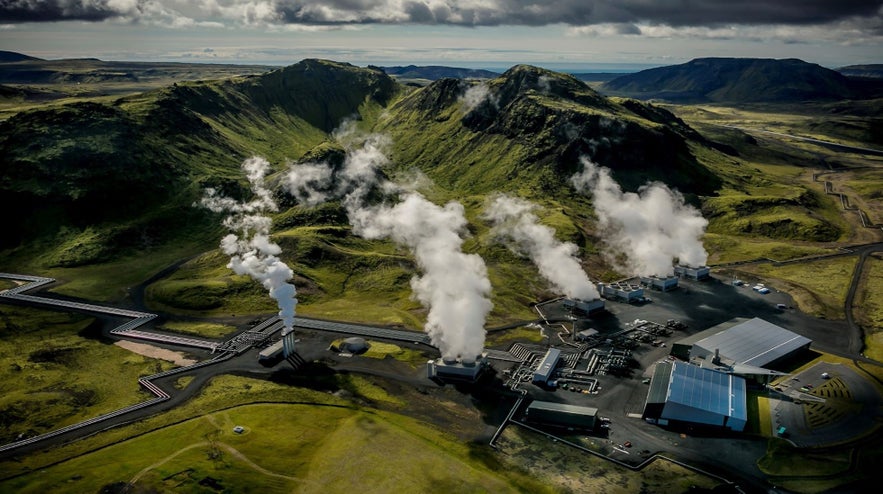
Photo from Wikimedia, Creative Commons, by Sigrg. Hellisheidavirkjun is the largest geothermal power plant in Iceland.
Electricity in Iceland is predominantly sourced from renewable resources such as hydroelectric and geothermal power. This is thanks to the abundant rivers and waterfalls found around the country and Iceland's location on the Mid-Atlantic Ridge, the source of the island's famous volcanic activity.
Most of Iceland's electricity comes from hydroelectric power. The country's rivers and waterfalls are utilized to generate electricity through the construction of dams and the controlled flow of water through turbines. This method relies on the kinetic energy of flowing water to generate power without producing greenhouse gas emissions!
However, geothermal power plants tend to get more international attention. They harness heat from the Earth's core by tapping into underground reservoirs of hot water and steam. This heat is used to generate electricity through turbines connected to generators. Iceland's unique geological characteristics, especially its volcanic activity, make it particularly suitable for geothermal energy production.
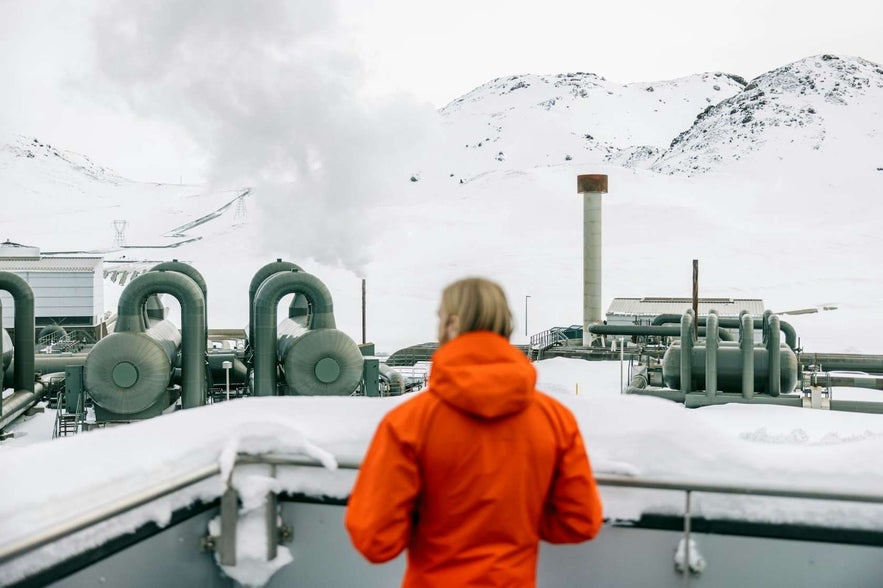
Photo from Fascinating 30-Minute Self-Guided Audio Tour of the Geothermal Exhibition at Hellisheidi Power Plant.
As you travel around Iceland, you may come across these power plants. On South Coast tours, for example, you'll pass by Hellisheidarvirkjun, the largest geothermal power plant in Iceland. You can't miss it, as you'll see great puffs of white steam from a great distance as you start your Ring Road trip from Reykjavik!
If you want to visit a geothermal power plant in Iceland, you can stop by Hellisheidavirkjun. It's most convenient with an affordable rental car, but keep in mind you won't be able to tour the actual facilities. You can, however, explore the power plants' Geothermal Energy Exhibition and learn all about the green energy process with this Geothermal Exhibition audio tour.
Another way to experience the benefits of geothermal power in Iceland is with a trip to the Blue Lagoon. This world-famous geothermal spa is supplied with water from the nearby Svartsengi geothermal power plant that spills over the surrounding lava field, creating one of the most magical places to experience in Iceland!
- Learn more: Iceland's Blue Lagoon: The Ultimate Travel Guide
- See also: The 30 Best Hot Springs and Geothermal Pools in Iceland
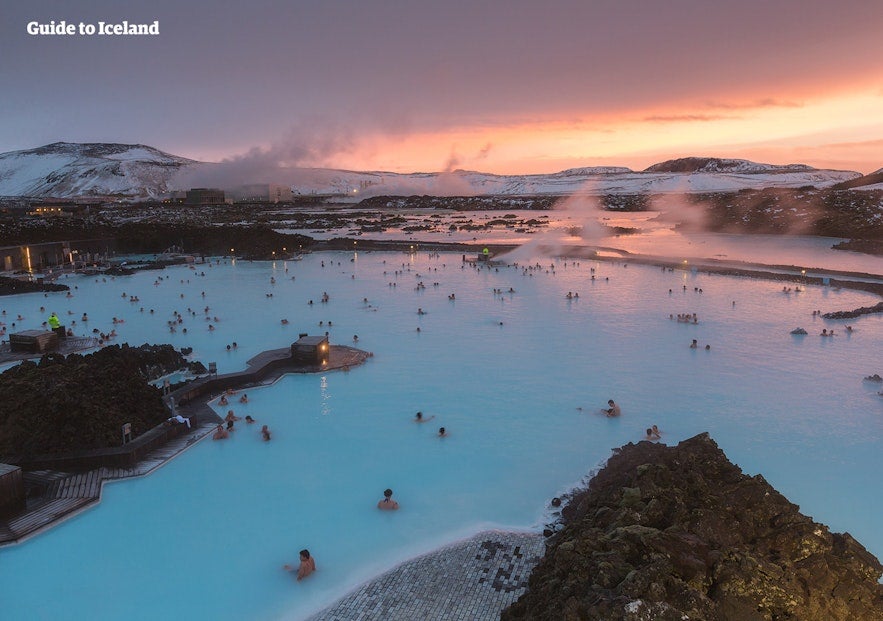 If you're interested in seeing how water is used for energy in Iceland, you can also visit a hydroelectric power plant. The Ljosafossvirkjun is one of the oldest power stations in Iceland, and it's just a 20-minute drive from the town of Selfoss, close to the Golden Circle area. During the summer months, you can visit an interesting interactive exhibition dedicated to hydroelectric power production that's designed to be fun for all ages.
If you're interested in seeing how water is used for energy in Iceland, you can also visit a hydroelectric power plant. The Ljosafossvirkjun is one of the oldest power stations in Iceland, and it's just a 20-minute drive from the town of Selfoss, close to the Golden Circle area. During the summer months, you can visit an interesting interactive exhibition dedicated to hydroelectric power production that's designed to be fun for all ages.
There are plenty of other geothermal and hydroelectric power plants all around Iceland. Most can only be seen from a distance but can be interesting attractions for those interested in green energy!
- The Ljosafoss power station is one of the Top 8 Things to Do in Selfoss
FAQ's About Electricity in Iceland
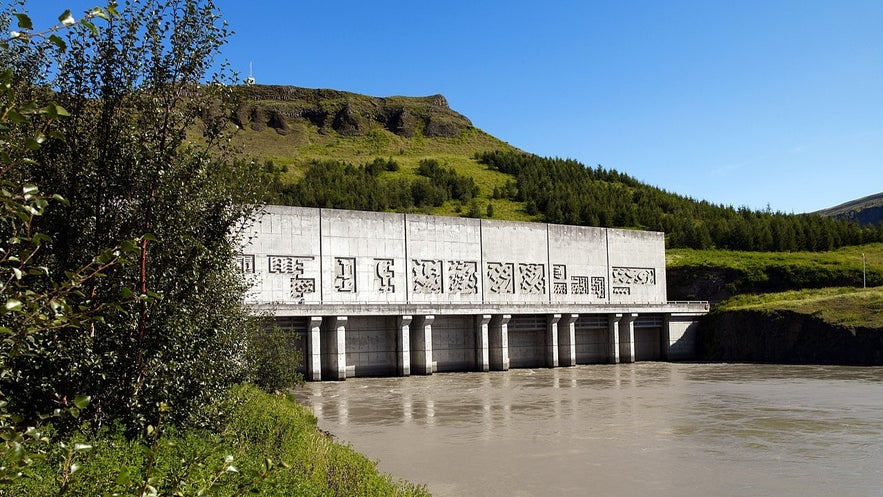
Photo from Wikimedia, Creative Commons, by LVCorporate. The Burfellstod hydroelectric power plant is located in South Iceland.
Find answers to some of the most frequently asked questions about electricity in Iceland.
Where can I buy an Iceland power adapter?
Power adapters and converters are readily available for purchase in various stores across Iceland, including electronics stores and even some hardware stores. The most convenient option, however, is to pick one up at the duty-free in Keflavik Airport upon arrival but keep in mind that they may not have every possible adapter type available. It's always safest to pick one up before departure to Iceland.
Can I use my electric appliances from home in Iceland?
As long as your appliances are compatible with Iceland's voltage and plug type, you can use your electric appliances without issues. Ensure compatibility or use voltage converters and plug adapters if necessary!
Why is electricity so cheap in Iceland?
Iceland benefits from abundant renewable energy sources, particularly geothermal and hydroelectric power. These resources are harnessed efficiently, resulting in low production costs for electricity. Iceland's population is also small, and relatively low energy demand compared to its production capacity contributes to competitive electricity prices.
Can I charge an electric vehicle in Iceland?
Yes, Iceland has a growing network of electric vehicle charging stations, particularly in urban areas and along popular tourist routes. Be sure to check the availability of charging stations along your travel route if you're driving an electric vehicle.
Can I drive the Ring Road with an electric car?
Yes, it's possible to drive Iceland's Ring Road (Route 1) with an electric car, but planning is essential. While charging stations are available along the route, they can be sparse in remote areas. Plan your itinerary carefully to ensure you can reach charging stations within your vehicle's range.
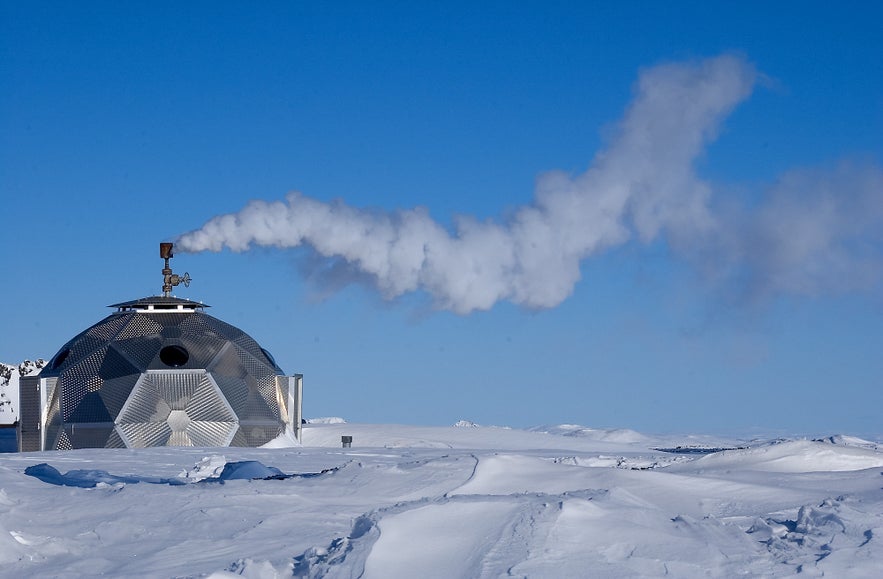
Photo from Lydur Skulason. Hot water boreholes are located in small, rounded buildings. The water is used to provide energy and hot water to Iceland.
Ensuring that your electric devices are compatible with Icelandic plugs, outlets, and voltage is one of the most important things to consider before your trip. When exploring this beautiful country, you want to keep your phone and camera charged to capture the landscapes and stay connected!
Prepare for your trip effectively and pack wisely for a hassle-free experience. Embrace the convenience of powering up in Iceland!
Will you need to bring an adapter or converter for your trip to Iceland? Are there any other topics that we should cover about electricity in Iceland? Share your thoughts and experience in the comment section below!

